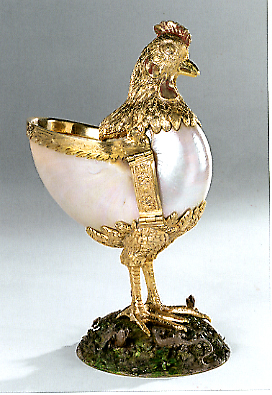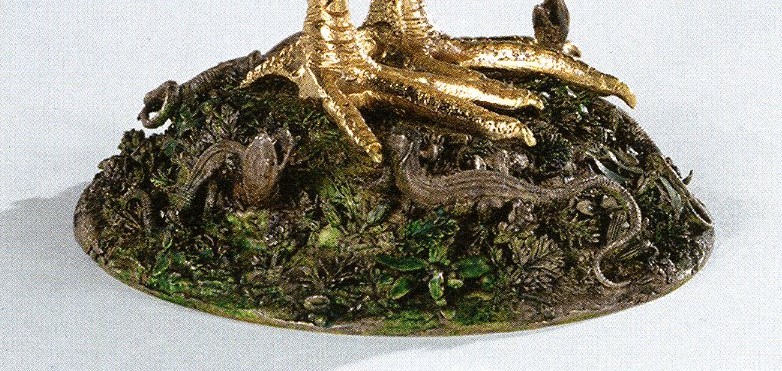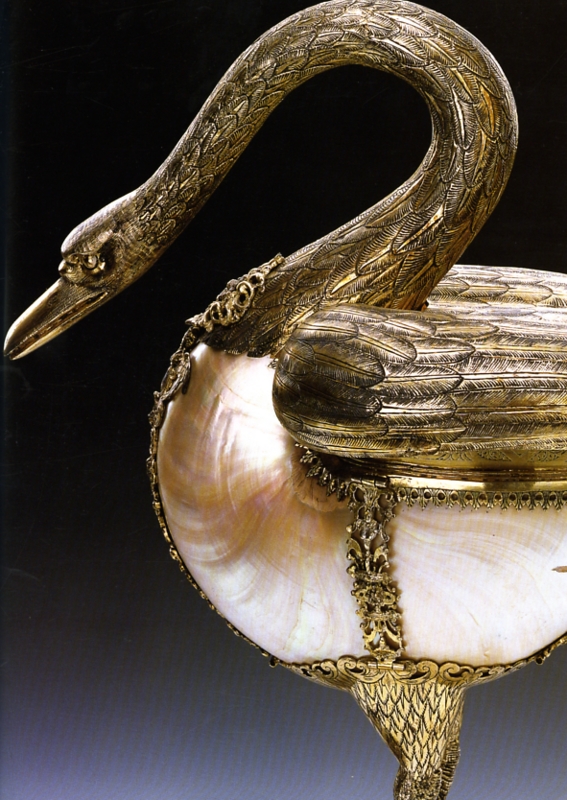Drinking Vessel in the Shape of a Cockerel

Workshop of Wenzel Jamnitzer, Drinking Vessel in the Shape of a Cockerel, 3rd quarter of 16th century. Nautilus shell, partly gilt and painted silver, natural casts, H. 18.4 cm. Kunsthistorisches Museum, Vienna, inv. no. KK 1060.
The milky-white body of the cockerel immediately captivates the viewer with its wondrous reflective luster. Its sheen is delicate, smooth, and soft, contrasting sharply with the solid, textured, and sharp gilding clasping the nautilus shell body. The striations of the shell radiate from the gold clasp near where its “wing” would be, producing a sense of rotundness already present in the form.
The cockerel stands erect atop a mossy ground filled with lizards, all of which are life-casts. Tinges of green survive on the base, the paint evoking a sense of the verdant outdoors. Red coloration also survives atop the rooster’s crown and his wattle, directly contrasting and enhancing the vegetation below. The vessel is both highly illusionistic and blatantly artificial; while the reptiles are life-sized, the cockerel is much too small to appear realistic. Tromp-l'œil is employed in an extremely artful manner.
The smooth and glossy texture of the nautilus shell was especially appealing – above it served as the body of a rooster. Yet they could just as well be integrated into the forms of other species, for “It held that all creatures and creation ‘rhymed’ even though, superficially, they appeared unlike one another” (note 1).
Such adoptions of form were very popular and a kind of delight, for they allow the hand to enter manipulate fine products of Nature in order to create something even more captivating. The discourse (and paragone) of Art and Nature is approached here from the mindset of art as a means to embellish nature, to make it more perfect (note 2). Demonstrated as well is man's ability (the practice of art) to transform materials (from nature) into a diversity of enthralling creations.
Notes:
note 1. Barbara Stafford, Devices of Wonder: From the World in a Box to Images on a Screen. (Los Angeles: Getty Research Institute, 2001), 4.
note 2. For more on the discourse of Art and Nature, see
Lorraine Daston and Katherine Park. Wonders and the Order of Nature, 1150-1750. (New York: Zone Books, 1998), 255-300.

